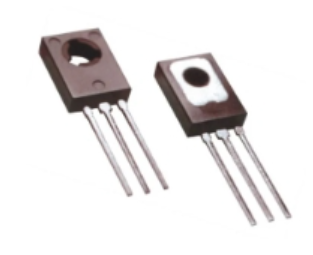Date:2025-06-25 Categories:Product knowledge Hits:389 From:Guangdong Youfeng Microelectronics Co., Ltd
A Darlington Transistor is a special P6KE200A bipolar junction transistor (BJT) consisting of two transistors cascaded together. It has the characteristics of high current amplification factor and low input current, and is commonly used in application circuits that require high current amplification.
1、 Basic structure:
A band stop Transistor is composed of two transistors cascaded together, where the first transistor is called the input stage (front stage) and the second transistor is called the output stage (back stage). The collector of the input stage is directly connected to the base of the output stage, while the collector of the output stage serves as the output terminal of the entire band stop transistor.
2、 Working principle:
The working principle of a resistive Transistor is based on the conductivity characteristics of a PN junction. When the voltage between the emitter junction and the base is forward biased, the emitter junction will become conductive. At this point, electrons from the emitter will be injected into the base, forming a current. If a reverse bias voltage is applied between the collector junction and the base, the collector junction will enter a reverse bias state, thereby preventing current from passing through. Therefore, the amplification effect of a resistive transistor depends on the magnitude of the control base current.
3、 Resistance ratio:
The resistance ratio of a resistive Transistor refers to the ratio between the base current (IB) and the collector current (IC), denoted as β. The typical value of β ranges from 20 to 1000, and different types of BJTs have different β values. The value of β determines the amplification capability of BJT, and a higher β value means a larger amplification factor.
4、 Common models:
Common NPN BJT models include 2N3904, 2N2222, BC547, etc. These models are low-power general-purpose BJTs suitable for most low-power applications. The characteristic of NPN BJTs is that the current direction between the base and emitter is the same.Transistor
Common PNP BJT models include 2N3906, 2N2907, BC557, etc. These models are also low-power general-purpose BJTs, suitable for most low-power applications. The characteristic of PNP BJTs is that the current direction between the base and emitter is opposite.
In addition to general-purpose BJTs, there are also some specialized models of BJTs, such as power type BJTs, high-frequency type BJTs, etc. These models have higher current and power processing capabilities, suitable for specific application areas.

Previous: Classification, Structure, and Principle of MOSFET